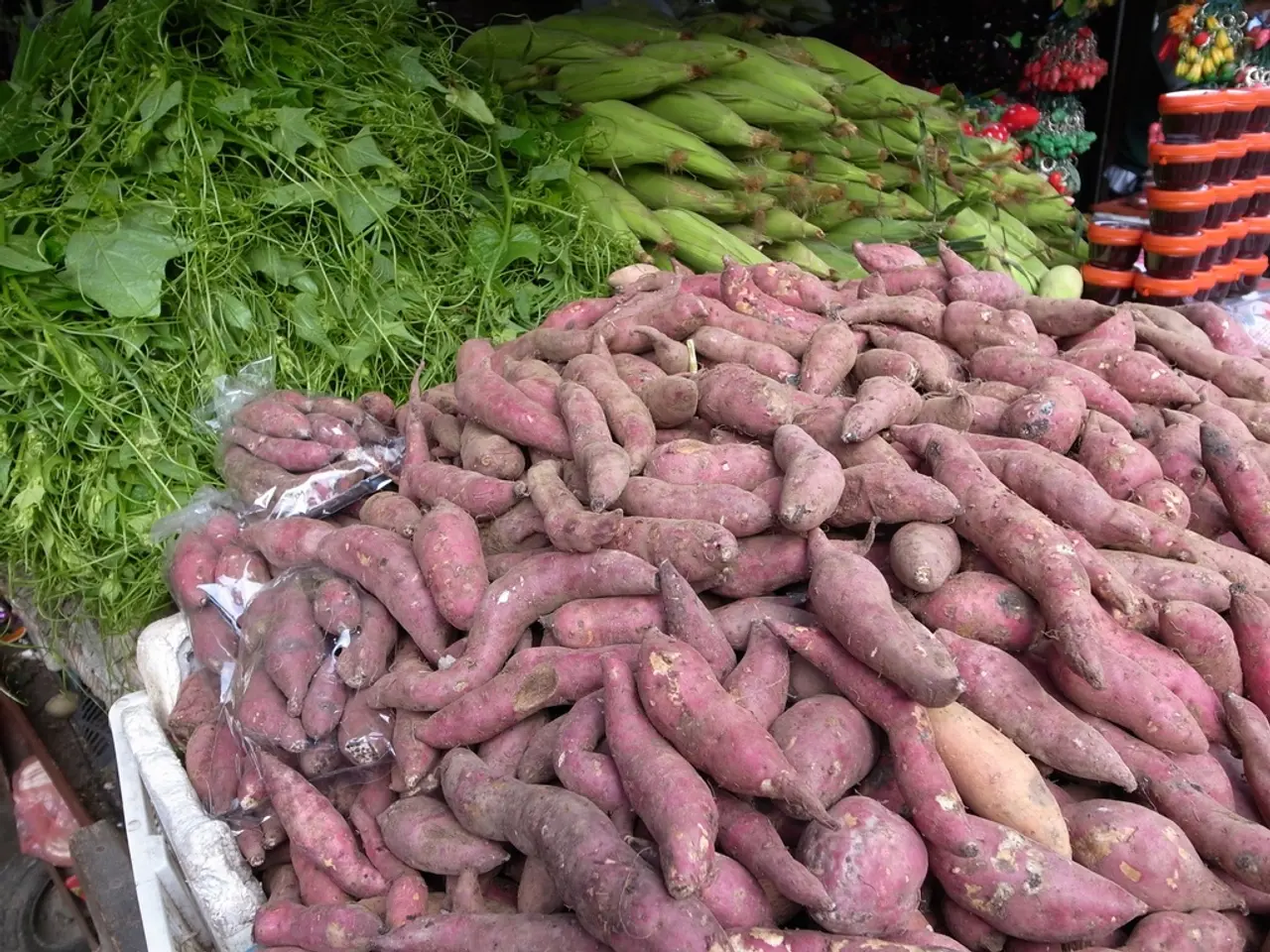still Time to Plant These Vegetable Seeds
Extending the Harvest Season: Ten Crops Ideal for Mid-Summer Planting
As the summer heat sets in, gardeners can continue to enjoy a bountiful harvest by planting a variety of crops during the mid-summer months. Here are ten crops that are well-suited for this period, providing a buffer against vine borers and extending the growing season.
The Recommended Crops
- Radishes
- Plant these in well-drained soil, keeping it consistently moist. Thin seedlings to avoid overcrowding and harvest before the hot weather stunts growth.
- Beets
- Direct sow these in loose soil, ensuring consistent moisture. Thin seedlings to 3-4 inches apart and mulch to conserve moisture.
- Carrots
- Plant shallow seeds covered lightly with sand to prevent soil crusting and aid seedling emergence. Keep the soil moist and remove any covering fabric as soon as seedlings appear.
- Peas
- Sow these about 8 weeks before the first expected hard frost. Support the vines and harvest pods regularly to encourage production.
- Bush Beans
- Sow these directly in warm soil. Keep the soil evenly moist and harvest pods frequently for continual production.
- Kale
- Start indoors or in partial shade to protect young plants from mid-summer heat, transplant outside when ready. Regular watering and mulching are essential, and harvest leaves as needed.
- Summer Squash (Zucchini)
- Direct sow seed in warm soil or transplant seedlings. Fertilize moderately, water regularly, and avoid water on leaves to reduce mildew.
- Napa Cabbage
- Start indoors or under shade, transplant when seedlings are robust. Keep the soil moist and evenly fertilized.
- Arugula
- Direct sow seed in cooler spots or partial shade during hot months. Water to keep leaves tender and harvest leaves young for best flavor.
- Yard Long Beans
- Plant these in warm, well-drained soil and provide trellis support. Keep the soil moist but not soggy and pick pods regularly to encourage production.
Best Practices for Planting and Caring for Mid-Summer Crops
- Soil Preparation: Loosen the soil, add organic matter, and ensure good drainage to support root crops and reduce disease risk.
- Moisture Management: Keep the soil evenly moist, especially during germination and seedling stages; use mulch to retain moisture and cool the soil surface.
- Shade & Heat Protection: Provide partial shade or start indoors for sensitive crops like kale and napa cabbage to protect from harsh midday sun.
- Pest Management: Rotate crops annually, inspect for vine borers especially on squash and beans, and remove infected vines promptly.
- Succession Planting: Sow new seeds every 2-3 weeks to extend the harvest window and maintain continuous yields.
- Harvest Timing: Pick crops regularly to encourage ongoing production and prevent overripening, which attracts pests.
- Spacing: Follow thinning recommendations to ensure good air circulation and reduce fungal diseases, which thrive in crowded environments.
These crops and practices help gardeners extend harvesting into fall while reducing the impact of pests like vine borers by avoiding extended exposure of vulnerable plants during peak borer activity. Planting mid-summer requires careful moisture and temperature management, but yields substantial fresh produce well beyond the usual season.
Additional crops like green onions, lettuce, spinach, and turnips can also be planted during this period to fill tables and boost confidence. Happy gardening!
References [1] Garden Myths: The Truth About Growing Vegetables [3] The Old Farmer's Almanac: Vegetable Gardening [5] National Gardening Association: Vegetable Gardening
- In addition to the recommended crops, green onions and lettuce can be plantedly in cooler spots or partial shade during hot months to fill tables with fresh produce.
- For best flavor, arugula leaves should be harvested when they are young, and watering should be done to keep them tender.
- To encourage ongoing production and prevent overripening, which attracts pests, crops should be picked regularly.
- Succession planting, which involves sowing new seeds every 2-3 weeks, can be used to extend the harvest window and maintain continuous yields.
- When planning to sow mid-summer crops, it's important to consider best practices such as soil preparation, moisture management, shade & heat protection, pest management, succession planting, harvest timing, and spacing.
- Beginning gardeners may find gardening magazines, books, or resources like The Old Farmer's Almanac: Vegetable Gardening and the National Gardening Association: Vegetable Gardening helpful in learning more about planting, caring for, and harvesting mid-summer crops to enrich their food-and-drink lifestyle and contribute to their home-and-garden decor with fresh, homegrown meals and recipes.







